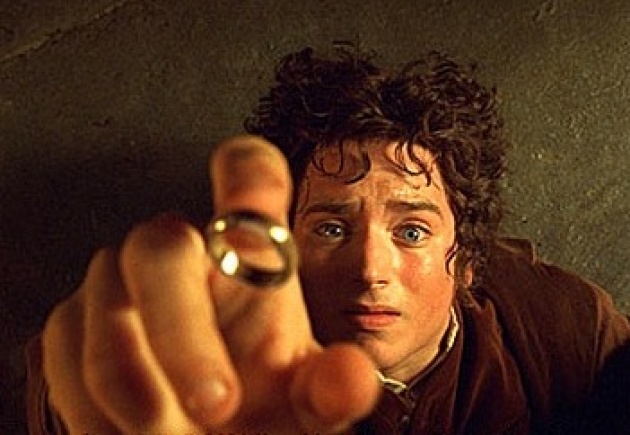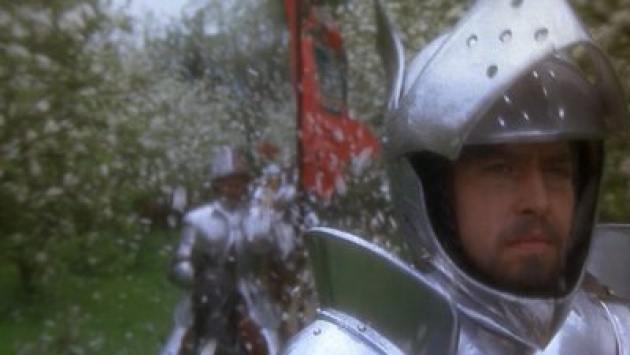Plot 3: The Quest
The Lord of the Rings, Excalibur and Raiders of the Lost Ark are examples of stories, according to Christopher Booker, sharing a fundamental plot: a protagonist is charged with a grand, all important task. In The Lord of the Rings, the old wizard Gandalf, tells the young Hobbit Frodo, there is volcanic mountain in the distant land of Mordor where he can finally rid the kingdoms of the priceless ring which possesses it bearers with evil powers, into the cracks of Doom. It is only Frodo who can carry this ring, as he is the chosen Hobbit who will not be fully bewitched by its mesmeric powers. In Excalabur, a deep curse leading to sickness and famine falls onto King Arthur and all his lands inflicted on him by his half-sister, Morgana who bears a son born of incest, Mordred. He sends his knights on a quest to find the Holy Grail which can restore the king and his lands. It is the most unlikely of these knights, Percival who succeeds. In Raiders of the Lost Ark Indiana Jones needs to secure the Ark of the Covenant, which Adolf Hitler believes has the power to make armies invincible, before a group of Nazis get it.

Booker identifies a pattern in these stories.
- The Call. There is some form of oppression or destruction inflicted on the whole land. The protagonist is given a supernatural directive in which they need to make a long difficult journey to rectify matters. Frodo is given the task of destroying the ring sought after by the evil Sauron, which would eventually pose a threat to Hobbit’s home, the Shire. The hero or heroine is also accompanied by companions who can be categorized into one of four types: those just there for the journey, alter egos, foils, or those being a necessary part making up the whole. Samwise Gamgee, companion of Frodo would be considered a faithful ‘alter ego type’.
- The Journey. The protagonist and his/her group make their way into the perilous lands. Booker describes this as cyclical phenomenon, where the protagonist goes through a near fatal ordeal, followed by an escape, then onto another dangerous ordeal and so on. These near fatal ordeals can be with monsters, temptations, narrow pathways between two opposing dangers, or through a journey into the underworld. There are a wealth of examples in Frodo’s journey, encountering such monsters as the Orcs (time and time over), the Black Riders and the fearsome giant spider Shelob; the seductive temptation of the power of the ring; the very narrow paths travelled between opposing armies during battle, and the very journey through Mordor, the most archetypical of underworlds.
- Arrival and Frustration. The protagonist arrives within sight if their goal but, you guessed it, has yet another obstacle to overcome. Booker argues, after our long journey we are only half way there. Oh No!!! This leads to:
- The final ordeals. The protagonist goes through a series of tests (usually three) to see if they’re really worthy of the prize. Frodo in fact fails the last of these tests when at Mount Doom in Mordor he finally doesn’t give up the ring on his own volition. It only ends up in the cracks of Doom when Frodo’s finger wearing the ring is bitten off by Gollum who overbalances and falls with the ring into the molten lava of Doom.
- The Goal. Needless to say this is what all the fuss was about! The task has been achieved and the kingdom restored to peace and order. The threat of evil overcome. One of the most memorable scenes I can remember in film is the blossoms in full bloom dropping their petals while the knights of the round table ride again in Excalibur!

Booker finally acknowledges (in his own way with words talking about so called ‘phases of expansion and contaction’ of the story) the three plots we’ve looked at so far, Overcoming the Monster, Rags to riches and The Quest can be further distilled into the basic three act structure: the set-up, conflict and resolution. He also describes” both a ‘light’ and ‘dark’ version of the Quest. He uses the classic story of Herman Melville’s Moby Dick, to illustrate a dark version where the protagonist, Captain Ahab sets out on a quest kill the great Sperm Whale, Moby Dick, leading to a voyage filled with bad omens and disaster.



